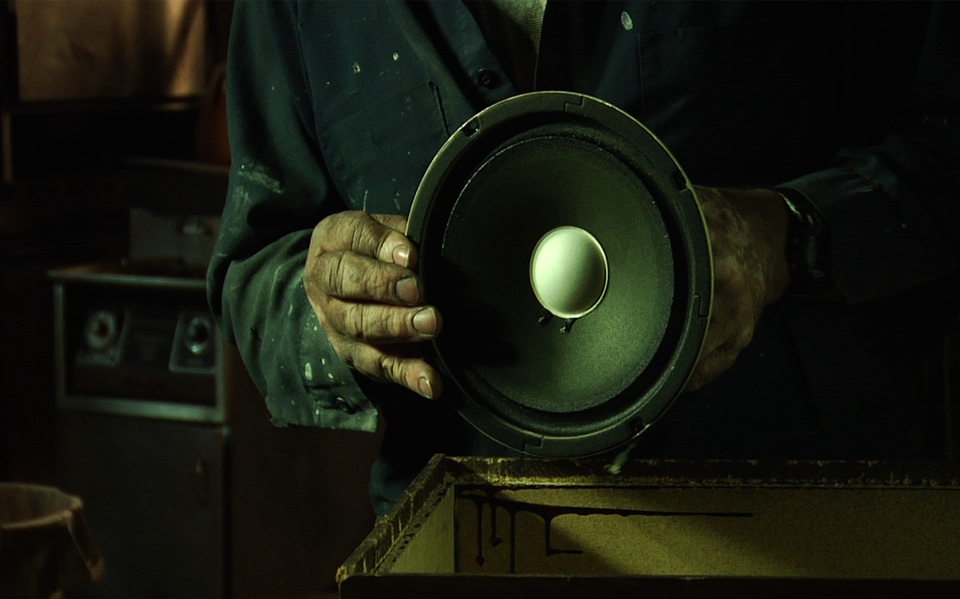
Charlotte Marra spoke with artist Luis Gispert in advance of his October 21 appearance at Conversations at the Edge.
Charlotte Marra: In the video René (2008), you create a portrait of a family friend. There is a marked difference in style and subject matter from your previous work (Stereomongrel, 2005, or Smother, 2008) and elements of neo-realism are perhaps more apparent in this work. Could you tell us more about your impetus for creating René?
Luis Gispert: René came out of a desire to work in an opposite manner to Smother. Smother had been a grand collaboration with filmmakers and actors, referencing the history and conventions of narrative cinema, indulging in fiction. René was to be an intimate portrait of someone close to me. It would only involve René, the camera, and me. It would end up being an amalgam of René’s life and fictions we created together.
CM: Do you feel that a viewer’s understanding of these narratives or references is an essential important part of their understanding of the work as a whole?
LG: Not necessarily. I try to make every piece autonomous. They have to work on their own. My personal cosmology is always a starting point for all work, but at some point it’s superceded by the form, process, and new information that’s picked up along the way. I guess all the sub-plots or narratives (if we can call them that) serve as a guide for me in the studio. It’s not essential for an audience to read all the reference points upon their first encounter with a work. If their curiosity is piqued, then they can dig deeper and make further connections.
CM: Your filmic style has been compared to that of Buñuel and Antonioni. You’ve also mentioned inspiration for recent sculptures coming from a Dave Chappelle skit. What are you currently reading or watching that you feel has influenced your work?
LG: René has lent me his very extensive bootleg collection of Cuban films and television from the 60s through the 90s, none of which have been subtitled or released in the US. It’s been fascinating to see how these filmmakers achieve artistic statements through a state-sanctioned cinema. Some are blatant propaganda but others exist in a nebulous zone that subtly questions the state’s lack of artist freedom. I was recently re-reading Allen Kaprow’s “Essays on the Blurring of Art and Life” and was reminded how little artists’ intents have changed in the last 45 years. The “art world” or “art market” has changed, but artists’ tactics in the studio have not. Art has become very conservative.
CM: You’ve spoken of making a feature film. What can you reveal?
LG: It’s a long-term project and I’m at the stage of writing a story. I’ve gone through several stories but think I’ve found one I’m satisfied with. It will fit within the structure of a noir genre film and follow a three-act structure. All I can say at the moment is that it’s the story of a character overwhelmingly moved by his/her heredity and environment. It’ll end up being a tragedy of someone’s irresistible will.
CM: How do you feel about working within a more conventional structure?
LG: For a feature film project, it’s important that it also function in a cinematic context. It poses a new challenge for me to work within the conventions and structure of a genre. To paraphrase Igor Stravinsky, “once the structure is set, experimentation within it is infinite.” I’ve found it’s been a bigger challenge to experiment within a set three-act structure than it is with free-formed experimental non-linear forms.